
Copenhagen vs Stockholm: Best Nordic Capital for Your Next Adventure in 2025
Copenhagen and Stockholm are two magnificent jewels of Scandinavia, each with special charm and character. These Nordic capitals offer travelers a perfect mix of old-world elegance and modern innovation. Stockholm tends to be more budget-friendly and safer, but Copenhagen edges ahead with its fantastic food scene, cozy atmosphere, and emerging digital nomad culture.
Many travelers feel torn between these amazing cities when planning their Scandinavian adventure. The truth is that both cities shine in their ways.
Stockholm is spread across 14 islands and has stunning waterfront views and colorful architecture, while Copenhagen wins hearts with its bike-friendly streets and world-class restaurants. Each city tells its own Viking tales through impressive museums and historic sites.
Contents
- Geographical Layout and Accessibility
- Island Connections and Archipelagos
- Cycling and Public Infrastructure
- Historical Insights
- Ancient Roots and UNESCO Sites
- Royal Residences Past and Present
- Cultural Experience
- Museums and Artistic Flair
- Traditions and the Concept of Hygge
- Dining and Gastronomy
- Local Cuisines and Iconic Dishes
- Cutting-Edge Culinary Destinations
- Entertainment and Nightlife
- Vibrant Clubs and Quiet Pubs
- Festivals and Year-round Events
- Outdoors and Nature
- Green Spaces and Botanical Gardens
- Oceanfront Views and Maritime Activities
- Accommodation and Lodging
- Luxe Hotels to Budget Hostels
- Sustainable Stays and Eco-Friendly Choices
- Comparing Costs and Budgeting Tips
- Safety and Emergency Information
- Frequently Asked Questions
- What are the key differences in nightlife between Copenhagen and Stockholm?
- Which city, Copenhagen or Stockholm, offers a more affordable cost of living?
- How do the sizes and population densities of Copenhagen and Stockholm compare?
- Which city is better for studying abroad than Copenhagen or Stockholm?
- In terms of tourist attractions, how do Copenhagen and Stockholm differ?
- For expats considering relocation, how does the quality of life in Copenhagen compare with Stockholm?
- More Travel Guides
Geographical Layout and Accessibility
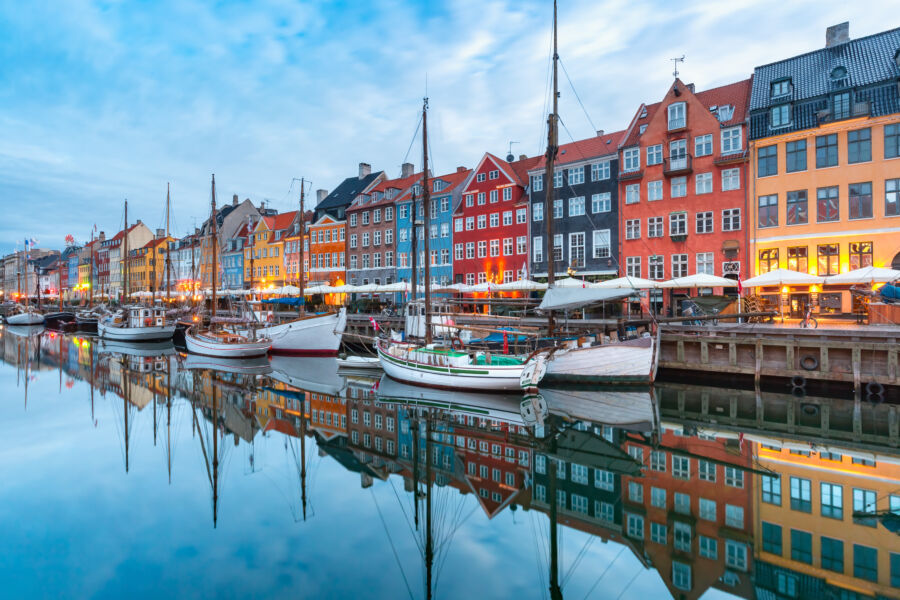
Stockholm and Copenhagen offer distinct urban layouts shaped by their unique geography. Each city’s structure influences how visitors explore and experience these Nordic capitals.
Island Connections and Archipelagos

Stockholm spreads across 14 islands connected by 57 bridges, creating a unique urban landscape where water is everywhere you look. The city sits at the entrance to the Stockholm Archipelago, which features over 30,000 islands stretching into the Baltic Sea.
Meanwhile, Copenhagen has a more traditional mainland layout, though it still maintains strong connections to the water. The city center sits on Zealand, Denmark’s largest island, with several canals winding through its streets.
Cycling and Public Infrastructure
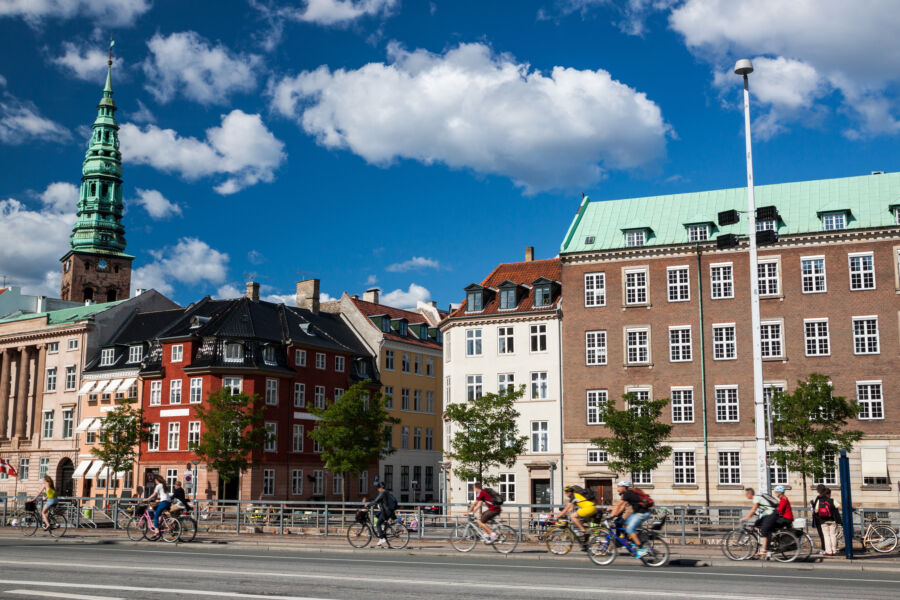
Copenhagen shines as one of the world’s top cycling cities. Its flat terrain and over 350km of dedicated bike lanes make two-wheeled transport a breeze. Bike rentals are available throughout the city, and many hotels offer free bikes to guests.
Stockholm’s public transport system includes boats as a regular commuting option. The tunnelbana (metro) connects all major areas, while buses and trams fill the gaps. Many stations double as art galleries, with unique designs and installations.
Despite the hilly terrain, Stockholm maintains extensive cycling infrastructure. From April to October, the city offers city bikes for rent, with numerous pickup and drop-off points across the islands.
Historical Insights

Stockholm and Copenhagen hold fascinating histories stretching over 800 years, with grand palaces and UNESCO sites telling stories of powerful Nordic kingdoms.
Ancient Roots and UNESCO Sites

Stockholm began as a Baltic Sea trading post in the 13th century. The city’s medieval heart, Gamla Stan, sits on a small island with narrow winding streets and colorful old merchant houses. This area remains one of Europe’s best-preserved medieval city centers.
Copenhagen started as a Viking fishing village in the 12th century. Due to its perfect location between the North and Baltic Seas, the city grew into a major port. The historic Christianshavn district, with its canals and old warehouses, showcases the city’s maritime past.
Each city protects its heritage carefully. Stockholm’s Royal Palace area earned UNESCO status for its stunning baroque architecture. Meanwhile, Copenhagen’s Nyhavn waterfront captures the spirit of its seafaring days with bright historic buildings lining the canal.
Royal Residences Past and Present

Stockholm’s Royal Palace is the world’s largest palace and is still used for its original purpose. The massive baroque building houses over 600 rooms and serves as the Swedish royal family’s workplace. Just outside the city, Drottningholm Palace provides a peaceful retreat for the royals.
Copenhagen matches this royal grandeur with several palaces. Rosenborg Castle holds the Danish Crown Jewels in its treasury. Built in the Dutch Renaissance style, its red brick towers rise above manicured gardens in the city center.
The Danish royal family uses Amalienborg Palace as their main residence. Four identical rococo palaces face each other across an octagonal courtyard where visitors can watch the daily changing of the royal guard.
See Related: Best Places to Visit in Europe This Year
Cultural Experience
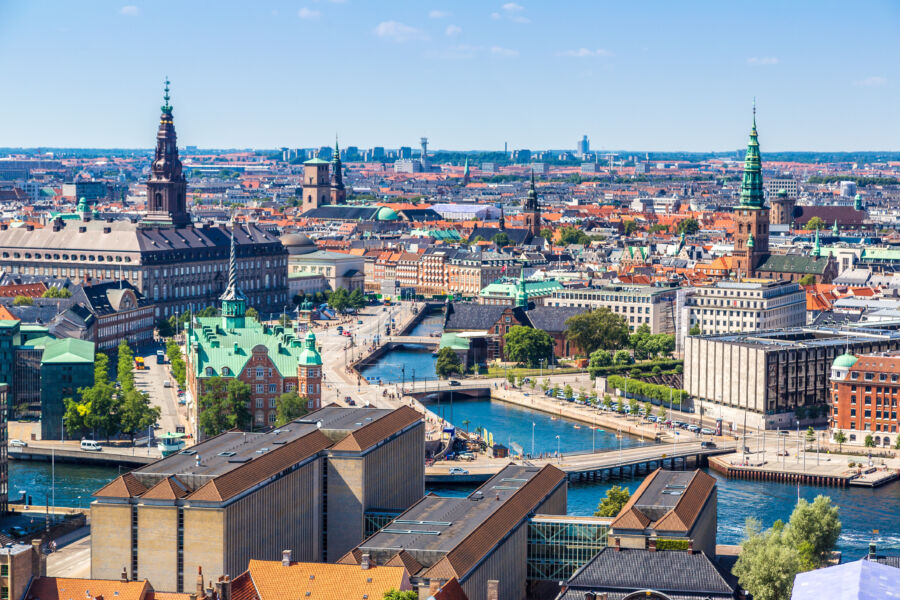
Stockholm and Copenhagen offer rich cultural scenes that blend historic traditions with modern artistic expression. Each city brings a unique cultural identity through world-class museums and distinctive local customs.
Museums and Artistic Flair

Stockholm shines with its diverse museum offerings. The Vasa Museum displays an intact 17th-century warship, making it one of the most visited spots in Scandinavia. Art lovers flock to Fotografiska for stunning photography exhibitions in a historic building.
The ABBA Museum adds a fun, musical touch to Stockholm’s cultural landscape. Dance, sing, and try on virtual costumes while learning about Sweden’s most famous pop group.
Copenhagen’s art scene centers around the Louisiana Museum of Modern Art. This stunning waterfront museum combines contemporary art with breathtaking views across the Øresund Strait.
The Moderna Museet showcases impressive collections of modern and contemporary art. Its rotating exhibitions feature both Danish and international artists.
Traditions and the Concept of Hygge

Danish hygge represents more than coziness – it’s a way of life. Copenhageners embrace this concept through candlelit cafes, warm gatherings, and intimate social spaces.
Meanwhile, Stockholm maintains strong connections to Swedish traditions through seasonal celebrations. The city comes alive during Midsummer with flower crowns and traditional dance.
Street food markets in both cities offer authentic local experiences. Copenhagen’s food halls serve smørrebrød alongside modern Nordic cuisine, while Stockholm’s markets feature traditional Swedish meatballs and fresh seafood.
Public spaces in both cities encourage cultural exchange. Coffee breaks, called fika in Stockholm and kaffepause in Copenhagen, remain essential daily.
Dining and Gastronomy
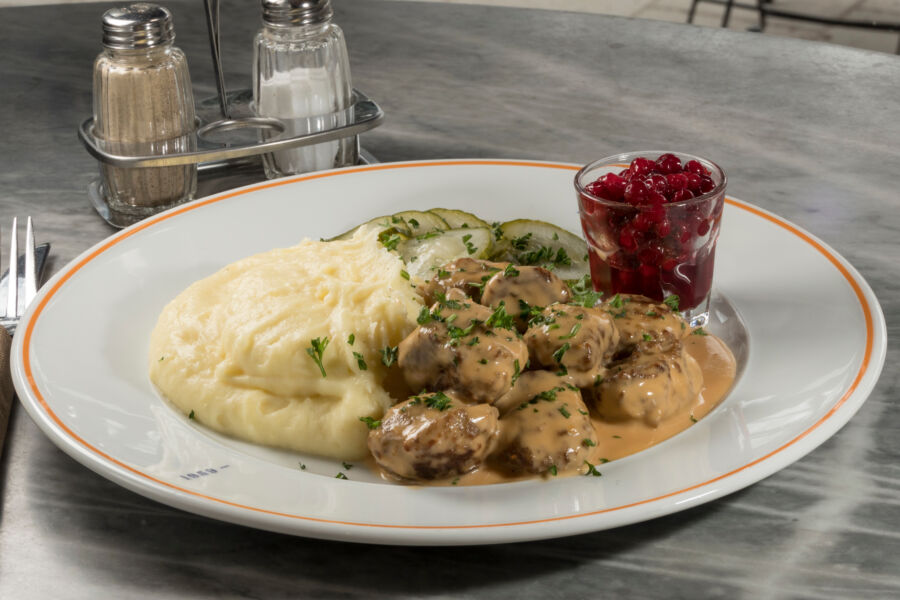
Both Copenhagen and Stockholm shine as food capitals with distinct culinary identities. Each city mixes traditional Nordic flavors with modern cooking styles.
Local Cuisines and Iconic Dishes

Copenhagen’s food scene centers on smørrebrød, famous open-faced sandwiches topped with pickled herring, eggs, or meat. The Danish capital loves seafood, drawing from the nearby waters for fresh fish dishes.
Stockholm takes pride in its traditional meatballs served with lingonberries and creamy sauce. Fresh seafood also plays a big role here, with locally caught salmon and shrimp featured in many restaurants.
Both cities embrace fika, the cherished coffee break tradition. Stockholm cafes often pair coffee with sweet cardamom buns, while Copenhagen’s coffee shops serve Danish pastries.
Cutting-Edge Culinary Destinations

Copenhagen’s Meatpacking District buzzes with trendy restaurants and food markets. The city gained worldwide fame through Noma, which helped create New Nordic Cuisine. Many new chefs keep pushing boundaries here.
Stockholm’s modern food scene focuses on fresh, local ingredients. The city has embraced food halls like Östermalms Saluhall, where visitors can sample Swedish specialties.
Craft beer adds extra flavor to both cities. Copenhagen’s Mikkeller leads an exciting beer scene, while Stockholm matches with its own growing craft brewery culture.
Both cities feature world-class restaurants, but Copenhagen edges ahead with more Michelin stars and innovative dining spots.
Entertainment and Nightlife
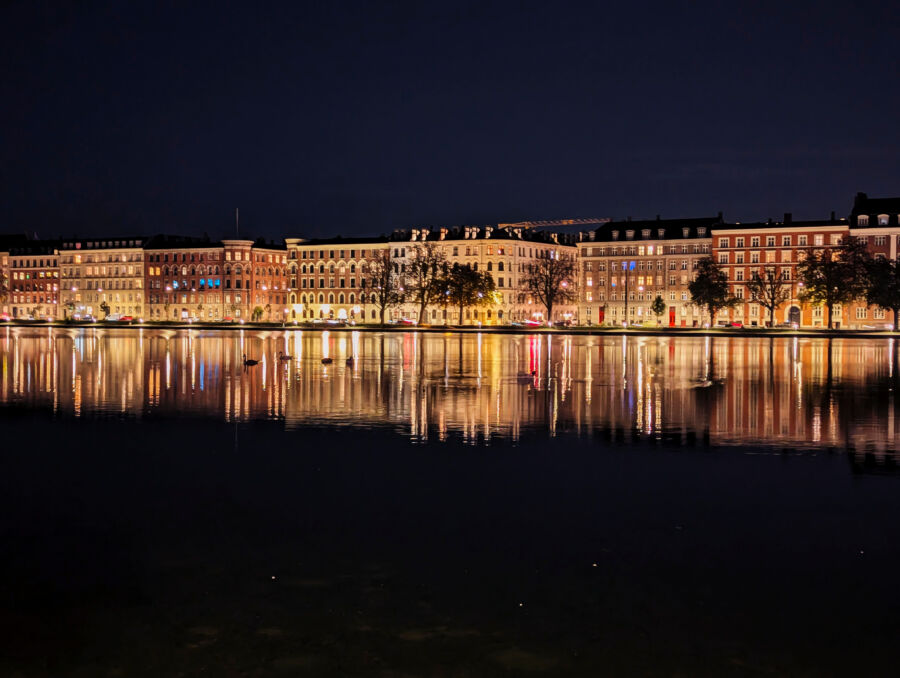
Both capital cities offer amazing nights out with distinct vibes. Copenhagen brings a more relaxed party atmosphere, while Stockholm shines with its upscale lounges and music scene.
Vibrant Clubs and Quiet Pubs

Copenhagen’s nightlife stands out for its mix of casual pubs and energetic dance spots. The Meatpacking District hosts some of the city’s best clubs, where people dance until sunrise. The city’s craft beer scene is huge, with Mikkeller bars leading the charge in unique brews and cozy atmospheres.
Stockholm’s nightlife focuses more on stylish cocktail lounges and wine bars. The Södermalm area is packed with trendy spots where locals sip creative drinks. Keep in mind that alcohol costs more in Stockholm due to Swedish regulations.
Festivals and Year-round Events

Copenhagen comes alive with music festivals in summer. The Roskilde Festival draws huge crowds just outside the city. Street parties pop up across neighborhoods from spring through fall, with local DJs and food stalls creating mini-festivals.
Stockholm’s music heritage is shown in its year-round concert calendar. The city hosts electronic music shows in converted industrial spaces and jazz nights in historic cellars. Many venues double as cafes during the day and transform into performance spaces at night.
Each neighborhood puts on its cultural festivals, from food markets to art shows. These events often include live music and run late into the evening, adding to the cities’ entertainment options.
See Related: Copenhagen vs Helsinki: Which Nordic Capital Offers Better Value
Outdoors and Nature

Both cities offer amazing outdoor spaces where nature meets urban life. Between Stockholm’s massive archipelago and Copenhagen’s seaside charm, visitors can find plenty of ways to enjoy fresh air and natural beauty.
Green Spaces and Botanical Gardens

Stockholm’s crown jewel is Djurgården, a green oasis in the city center. This royal park stretches across an entire island, with walking trails, gardens, and museums scattered throughout its grounds. During warm summer days, you’ll spot locals having picnics here.
The University of Copenhagen Botanical Garden stands out with its 27 historic glasshouses. The Palm House features a cast-iron spiral staircase where visitors can climb up for a unique view of tropical plants.
Both cities maintain extensive urban parks and gardens that serve as peaceful retreats from city life. Stockholm’s parks often incorporate rocky outcrops and pine forests, while Copenhagen’s green spaces are more manicured with colorful flower beds.
Oceanfront Views and Maritime Activities

Stockholm’s archipelago of 30,000 islands creates endless possibilities for water activities. Kayaking between islands or boat trips to nearby nature reserves lets visitors experience the Baltic Sea up close. Many locals own summer cottages on these islands.
Copenhagen’s harbor has become a hub for urban swimming. The clear waters attract tourists and residents who jump in at designated swimming spots during summer. Kayak rentals are also popular here.
Maritime activities run year-round in both cities. Winter brings ice skating on frozen lakes in Stockholm, while Copenhagen’s waterfront paths stay busy with joggers and cyclists in all seasons.
Accommodation and Lodging

Both cities offer diverse lodging choices, from upscale hotels to budget-friendly hostels. The key difference lies in price and availability – search hotels and accommodations early for the best deals.
Luxe Hotels to Budget Hostels
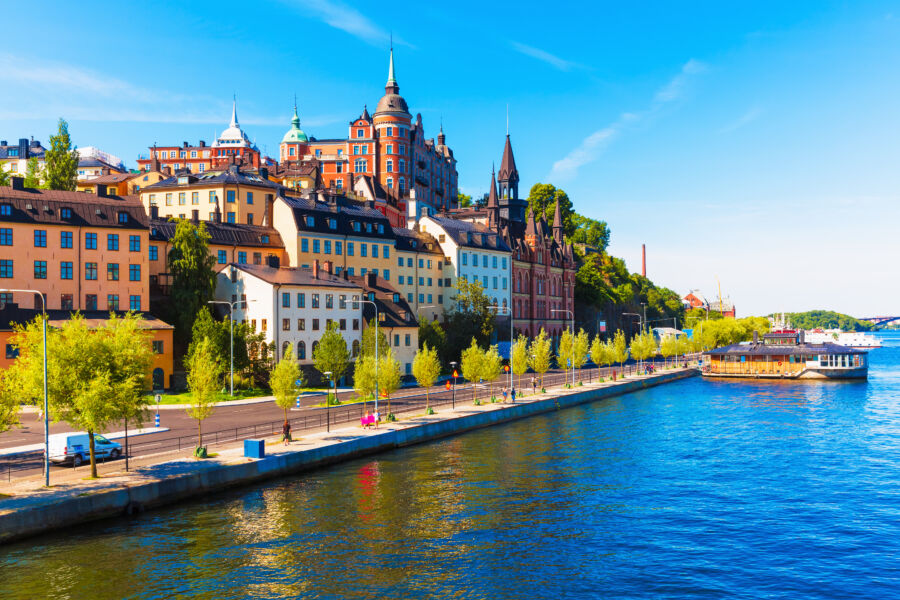
Stockholm tends to be cheaper for accommodations compared to Copenhagen. A mid-range hotel in Stockholm costs around $120-180 per night, while similar rooms in Copenhagen run $150-220.
The Indre By area of Copenhagen puts visitors close to the main attractions but commands premium rates. Smart travelers book rooms in nearby Vesterbro or Nørrebro for better value.
Stockholm’s Gamla Stan (Old Town) features charming boutique hotels in historic buildings. The Södermalm district attracts budget travelers with its hip hostels and affordable guesthouses.
Sustainable Stays and Eco-Friendly Choices

Both cities lead the way in green hospitality. Many properties use renewable energy and follow strict environmental guidelines.
Stockholm’s hotels often feature smart room controls that automatically adjust heating and lighting to reduce energy use. Most provide organic breakfast options and locally sourced toiletries.
Copenhagen’s sustainable accommodations focus on reducing food waste and plastic use. Popular eco-friendly features include bike rentals, recycling programs, and water conservation systems.
The Green Key certification marks environmentally responsible properties in both cities. These hotels maintain high sustainability standards while keeping guest comfort a top priority.
Comparing Costs and Budgeting Tips
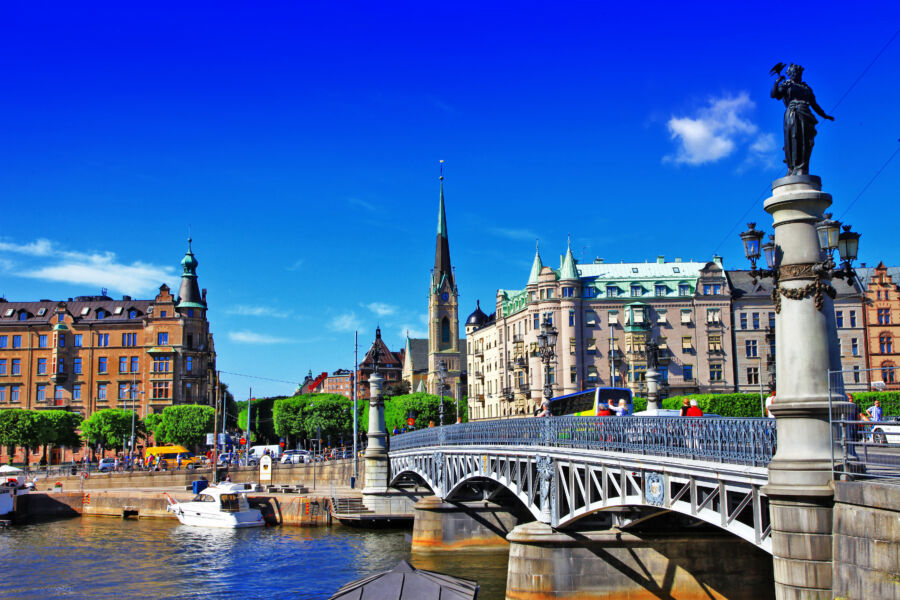
Living costs in Copenhagen tend to be higher than in Stockholm. Everyone needs around $1,076 monthly in Copenhagen, not including rent.
Stockholm offers more budget-friendly options for travelers. Daily costs range from $90-180 compared to Copenhagen’s $110-210.
Money-saving tips for both cities:
- Get city cards for free public transport and museum entry
- Stay in hostels or budget hotels outside city centers
- Cook some meals instead of eating out
- Visit free attractions and parks
- Travel during off-peak seasons
Food prices are steep in both cities. A basic meal costs $15-25 in Stockholm and $18-30 in Copenhagen. Grocery shopping can save you a lot of money.
Public transport is reliable and affordable in both places. Stockholm’s metro system costs slightly less than Copenhagen’s.
Accommodations make the biggest difference in costs. Stockholm’s hotels and rentals average 10-15% cheaper than Copenhagen’s. Budget travelers should pick Stockholm for better room deals.
Museums and attractions often have free days each month. Check city websites to plan visits around these dates. Many outdoor sites and parks cost nothing to enjoy.
Entertainment and nightlife prices in both cities are similar. Expect to pay $8-12 for drinks at bars. Free events happen regularly, especially in summer.
Safety and Emergency Information

Stockholm and Copenhagen rank among Europe’s safest capital cities. Both places let you walk freely during daylight hours, with Copenhagen scoring slightly higher for daytime safety at 84% compared to Stockholm’s 68%.
Nighttime safety shows bigger differences between these Scandinavian cities. Copenhagen feels safer after dark, with a 68% safety rating. Stockholm’s nighttime safety is 46%, making it moderately safe but requiring more caution.
Both cities maintain strong emergency response systems. DIS (Danish Institute for Study Abroad) operates 24/7 emergency phones in both locations to help needy travelers.
Some basic safety tips for both cities:
- Stay aware of your surroundings, especially at night
- Keep valuables secure and out of sight
- Save local emergency numbers in your phone
- Travel in groups when possible after dark
- Stick to well-lit main streets in the evening
Pickpocketing and bicycle theft are the most common safety issues in both cities. Violent crime remains rare in these Scandinavian capitals.
Always check weather conditions before heading out. Winter brings early darkness and icy conditions to both cities, making extra caution necessary when walking or cycling.
See Related: Hidden Boutique Hotels in Europe That Redefine Luxury
Frequently Asked Questions
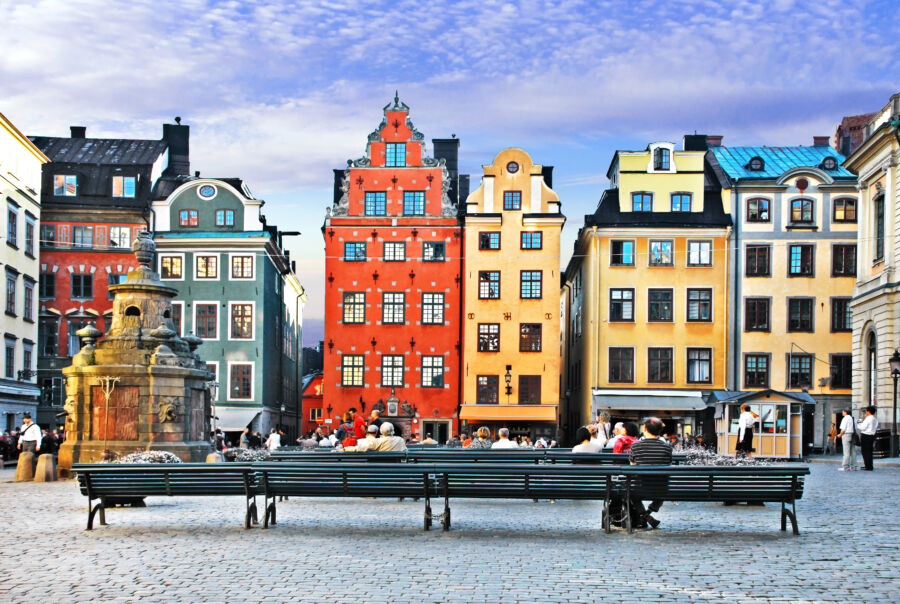
Copenhagen and Stockholm each offer unique experiences with distinct differences in nightlife, costs, attractions, and living conditions that affect tourists and residents.
What are the key differences in nightlife between Copenhagen and Stockholm?
Copenhagen’s nightlife runs later into the night, with many bars open until 5 or 6 AM. The city’s Meatpacking District buzzes with trendy bars and clubs.
Stockholm’s nightlife focuses more on upscale venues and wine bars. The city has strict alcohol laws and earlier closing times, typically around 2 AM.
Which city, Copenhagen or Stockholm, offers a more affordable cost of living?
Copenhagen tends to be less expensive for housing and dining out. Rent prices average 15% lower than in Stockholm.
Stockholm has higher grocery and public transportation costs. Due to Swedish tax policies, eating at restaurants and buying alcohol also cost more.
How do the sizes and population densities of Copenhagen and Stockholm compare?
Stockholm covers slightly more area at 72.59 square miles than Copenhagen’s 69.42 square miles.
Copenhagen has a more compact city center, making it easier to explore on foot. Most attractions sit close together. Stockholm spreads across 14 islands, creating a more dispersed urban layout.
Which city is better for studying abroad than Copenhagen or Stockholm?
Copenhagen offers more English-taught programs and a laid-back student culture. Many universities partner with international institutions.
Stockholm provides excellent research facilities and tech-focused education. The city hosts several world-ranked universities with strong STEM programs.
In terms of tourist attractions, how do Copenhagen and Stockholm differ?
Copenhagen features free attractions like The Little Mermaid statue and Nyhavn waterfront. The city emphasizes Danish design and modern architecture.
Stockholm showcases more museums and historical sites. The Vasa Museum and Royal Palace draw millions of visitors yearly.
For expats considering relocation, how does the quality of life in Copenhagen compare with Stockholm?
Copenhagen ranks high for work-life balance and cycling infrastructure. The Danish healthcare system provides easy access for residents.
Stockholm excels in public services and green spaces. The city offers better parental leave policies and workplace benefits. The Swedish capital provides more job opportunities in tech and startups.



